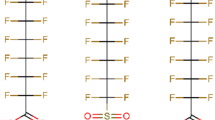Summary
16,16-Dimethyl PGE2 (dmPGE2) has previously been shown to protect the in vivo rat liver against CCl4-induced damage. These studies were undertaken to determine if this protection could be demonstrated in vitro where factors of absorption, secretion, and blood flow are not present. Primary hepatocyte cultures were established by perfusing rat liver with collagenase. Hepatocytes were plated at a density of 2×104 cells/cm, allowed 90 min to attach, then stabilized in L15 medium for 18 h. Hepatocytes were then challenged with CCl4 with concomitant exposure to 10−9 to 10−5 M dmPGE2, stearic acid, oleic acid, or ethanol vehicle (0.00001 to 0.1%). After 1 h, challenge was aspirated and cells were stained with 0.04% trypan blue to determine viability. Hepatocytes in the vehicle groups took up more trypan when exposed to CCl4 than those treated with dmPGE2, stearic acid, or oleic acid at concentrations of 10−9 to 10−7 M. At 0.1% ethanol vehicle protected as well as all other treatments. Protection against CCl4 by dmPGE2, stearic, and oleic acids as well as high concentrations of ethanol may occur by altering the metabolism of CCl4.
Similar content being viewed by others
References
Feely, J.; Wood, A. J. J. Reduction in apparent liver blood flow in man by histamine receptor blockers and inhibition of prostaglandin synthesis Br. J. Clin. Pharmacol. 13(4):592P; 1981.
Gambino, S. R.; Schreiber, H. The measurement and fractionation of bilirubin in the autoanalyzer by the method of Jendrassik and Grof, Automation in Analytical Chemistry, Technicon, GmbH Frankfort, p. 437 Symposia, 1964.
Kessler, G.; Rush, R. L.; Leon, L. et al. Automated 340-nm measurement of SGOT, SGPT, and LDH. Adv. Automated Analysis. 1:67–74; 1971.
Kupfer, D. Endogenous substrates of monooxygenases: Fatty acids and prostaglandins. Pharm. Ther. 11:469–496; 1980.
Kupfer, D. Endogenous substrates of monooxygenase. In: Schenkman, J. B.; Kupfer, D. eds., Hepatic cytochrome P-450 monooxygenase system. New York: Pergamon Press; 1982:173.
Recknagel, R. O.; Glende, E. A., Jr. Carbon tetrachloride hepatotoxicity: An example of lethal cleavage. CRC Cri. Rev. Toxicol. 2:263; 1973.
Richardson, P. D. I.; Withrington, P. G. The vasodilator actions of isoprenaline, histamine, prostaglandin E2, glucagon and secretin on the hepatic arterial vascular bed of the dog. Br. J. Pharmacol. 48:337; 1978.
Rush, B. D.; Nichols, N. M.; Merritt, M. V. et al. Mechanistic studies on the protection of rat liver from carbon tetrachloride by 16,16-dimethyl-PGE2. Fed. Proc. 42:509; 1983.
Ruwart, M. J.; Rush, B. D.; Friedle, N. M. et al. Protective effects of 16,16-dimethyl PGE2 on the liver and kidneys. Prostaglandins 21(Suppl):102; 1981.
Ruwart, M. J.; Rush, B. D.; Friedle, N. M. 16,16-Dimethyl PGE2 partially prevents necrosis due to aflatoxin in rats. Gastroenterology 82:1167; 1982.
Ruwart, M. J.; Rush, B. D.; Nichols, N. M. et al. 16,16-Dimethyl prostaglandin E2(DMPG) lowers the collagen content of rat liver in nutritional injury. Hepathology 5:833; 1983.
Schanne, F. A. X.; Zucker, A. H.; Farber, J. L. Alcohol-dependent liver cell necrosis in vitro: A new model. Science 212:338–340; 1981.
Stachura, J.; Tarnawski, A.; Ivey, K. J. et al. 16,16-Dimethyl prostaglandin E2 protection of rat liver against acute injury by galactosamine, acetaminophen, ethanol and ANIT. Gastroenterology 80:1349; 1981.
Stachura, J.; Tarnawski, A.; Ivey, K. J. et al. Prostaglandin protection of carbon tetrachloride-induced liver cell necrosis in the rat. Gastroenterology 81:131; 1981.
Strubelt, O.; Breining, H. Influence of hypoxia on the hepatotoxic effects of carbon tetrachloride, paracetamol, allyl alcohol, bromobenzene and thioacetamide. Toxicol. Lett. 6:109; 1980.
Strubelt, O. Interactions between ethanol and other hepatotoxic agents. Biochem. Pharmacol. 29:1445–1449; 1980.
Truss, C. C.; Killenberg, P. G. Treatment of carbon tetrachloride poisoning with hyperbaric oxygen. Gastroenterology 82:767; 1982.
Williams, G. M.; Bermudez, E.; Scaramuzzino, D. Rat hepatocyte primary cell cultures. III. Improved dissociation and attachment techniques and the enhancement of survival by culture medium. In Vitro 13:809; 1977.
Wroblewski, F.; LaDue, J. S. Serum glutamic pyruvic transaminase in cardiac and hepatic diseases. Proc. Soc. Exp. Biol. Med. 91:569; 1956.
Author information
Authors and Affiliations
Rights and permissions
About this article
Cite this article
Ruwart, M.J., Nichols, N.M., Hedeen, K. et al. 16,16-Dimethyl PGE2 and fatty acids protect hepatocytes against CCl4-induced damage. In Vitro Cell Dev Biol 21, 450–452 (1985). https://doi.org/10.1007/BF02620833
Received:
Accepted:
Issue Date:
DOI: https://doi.org/10.1007/BF02620833




